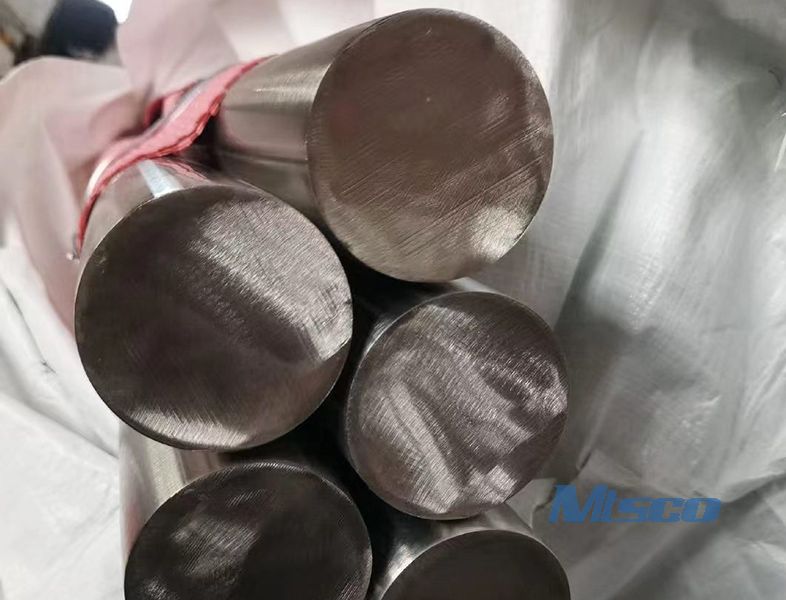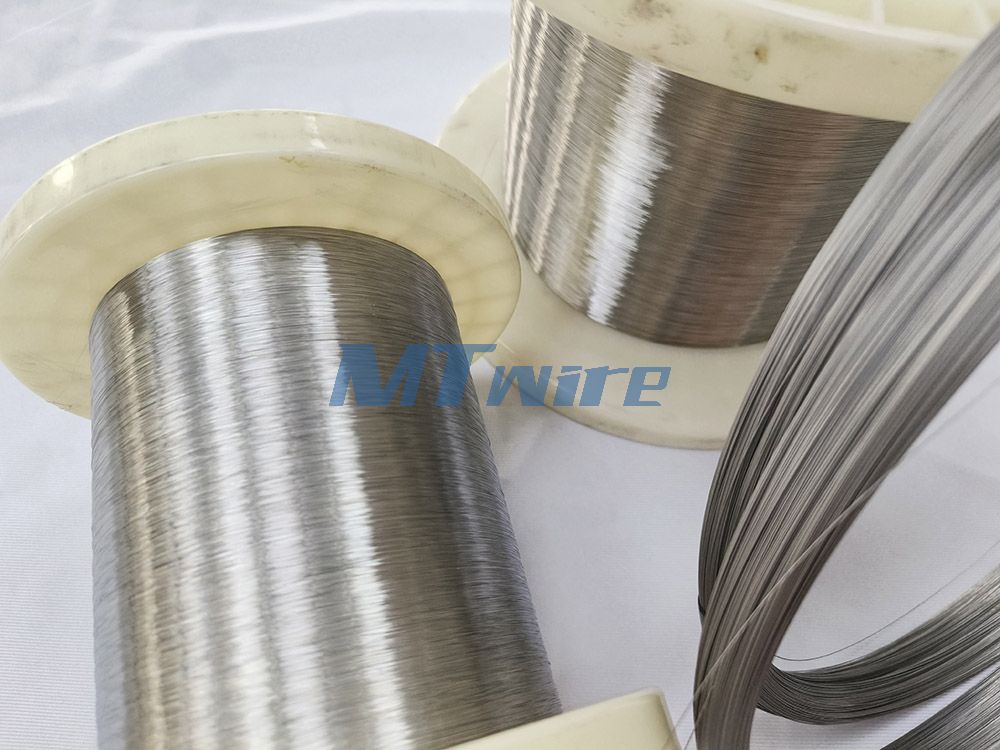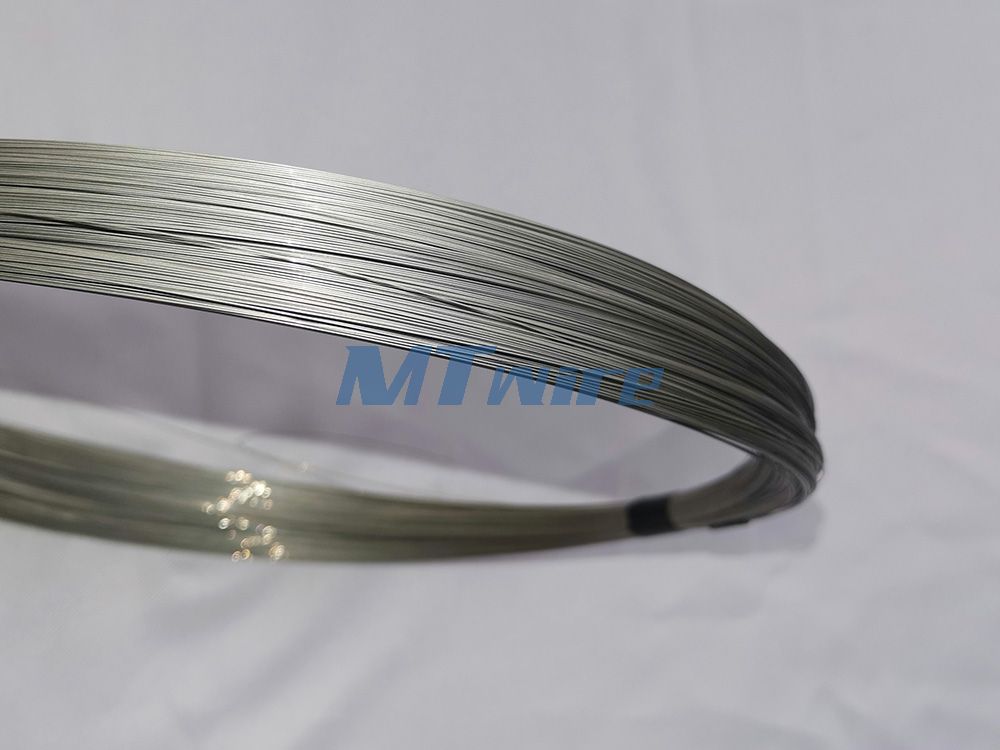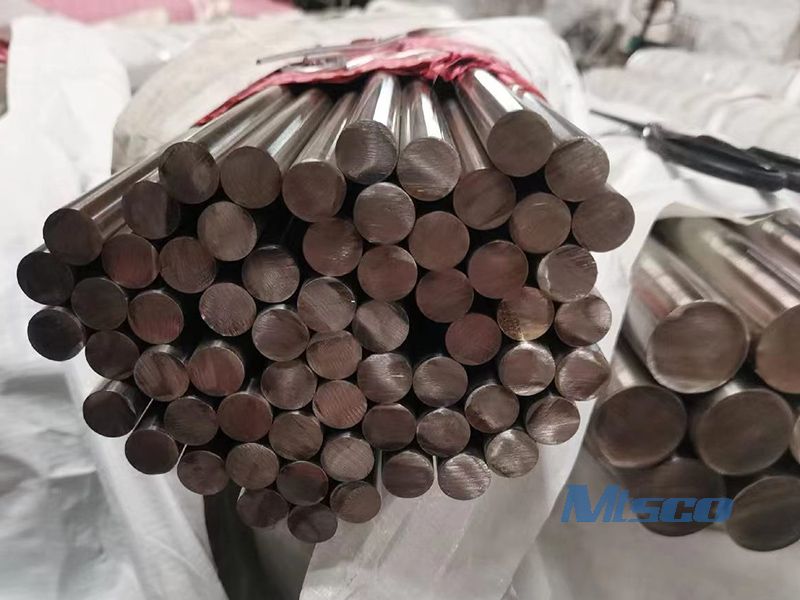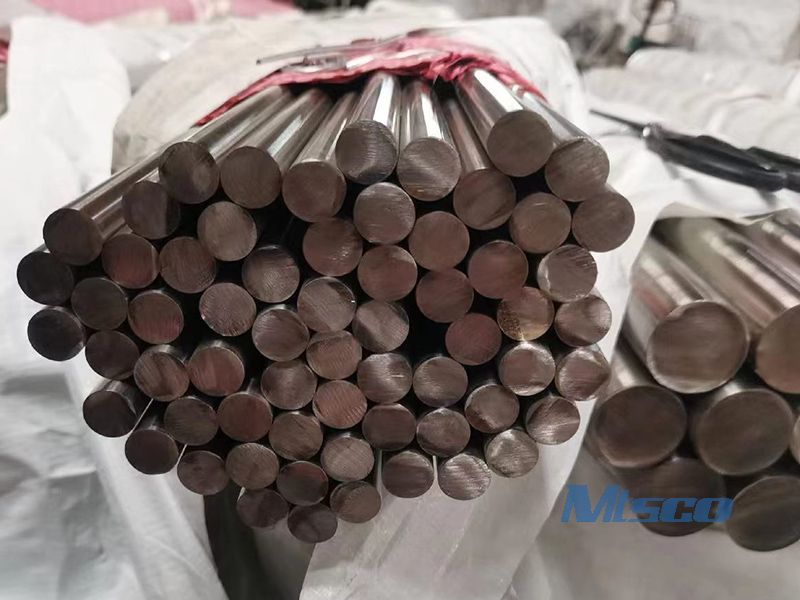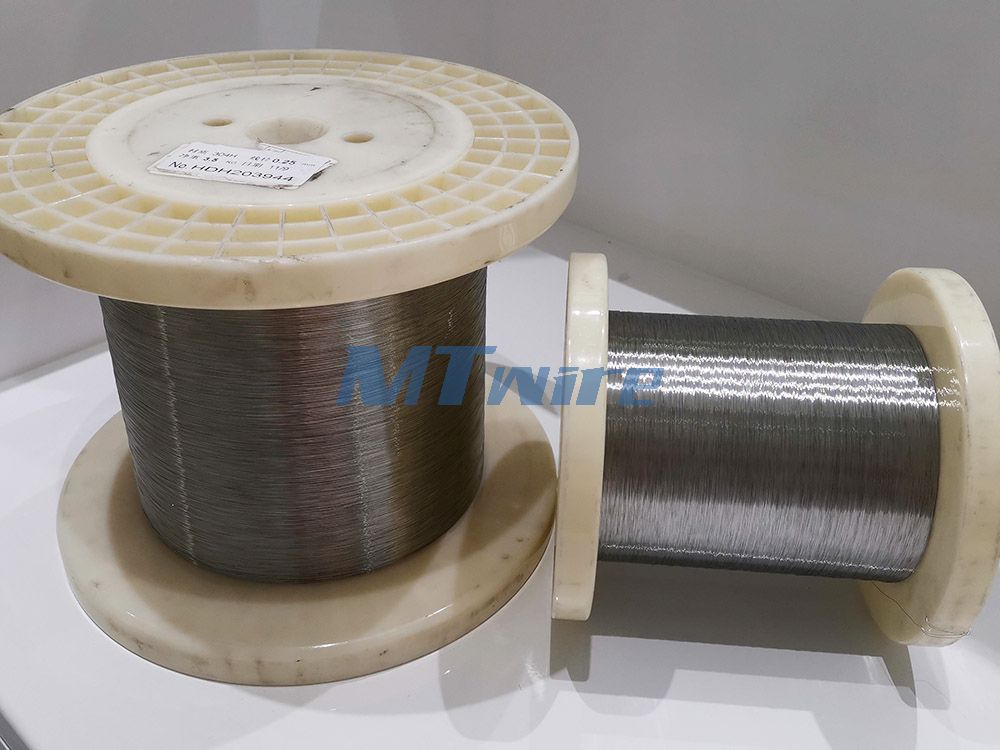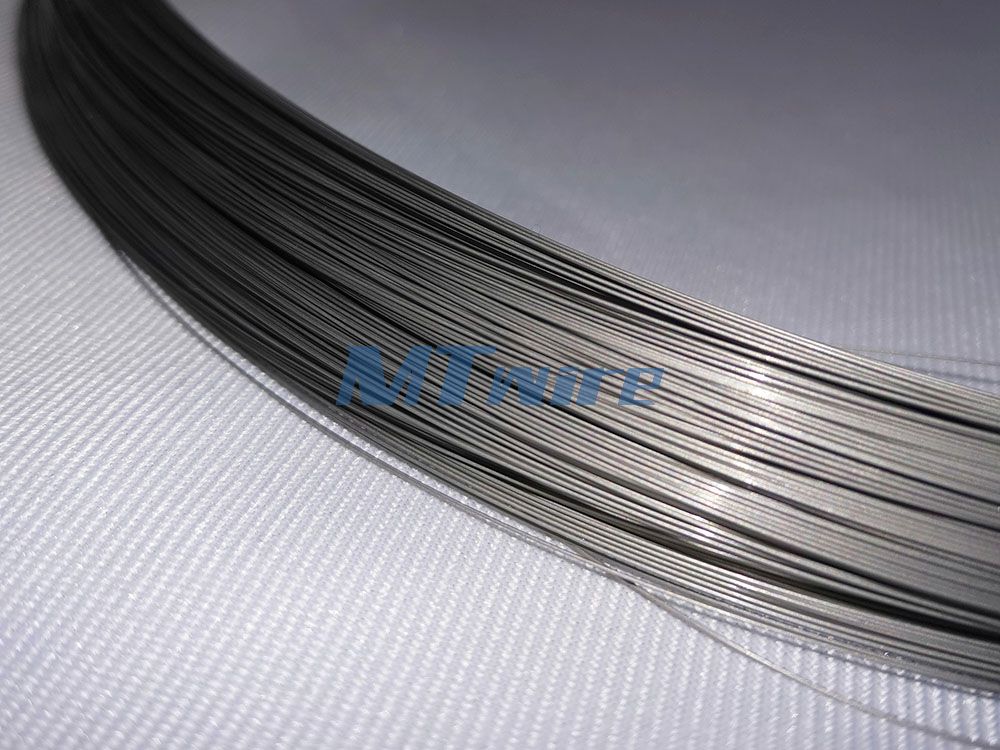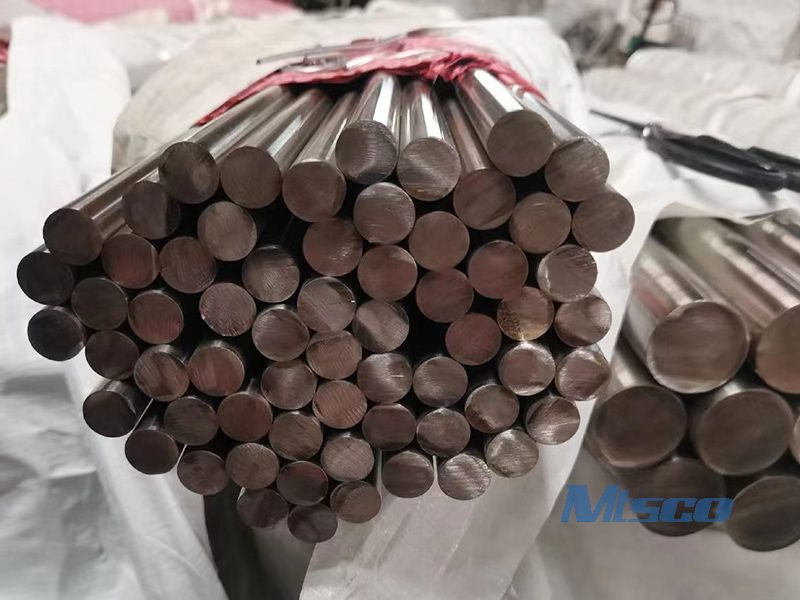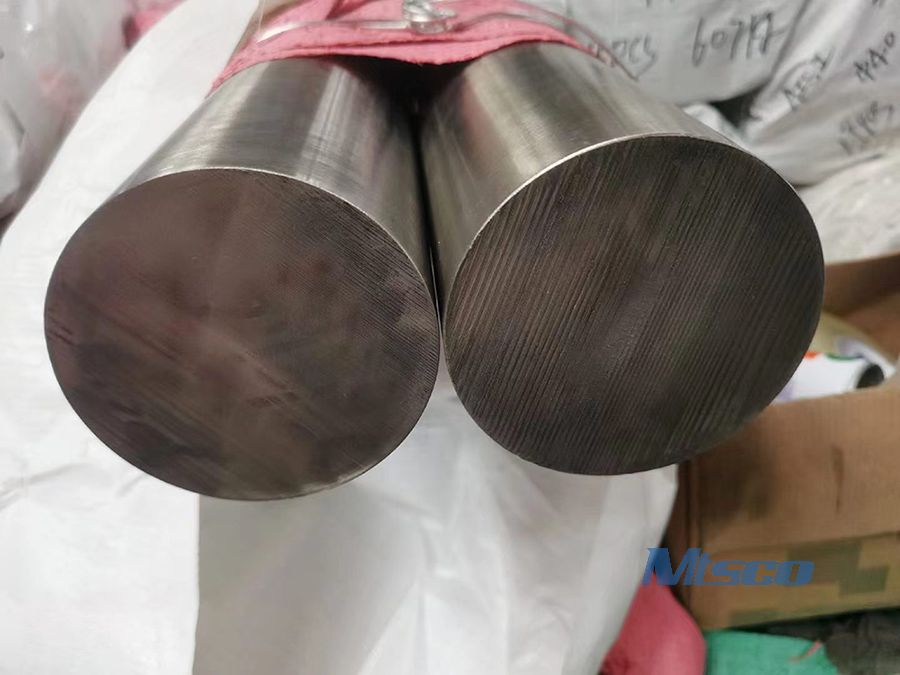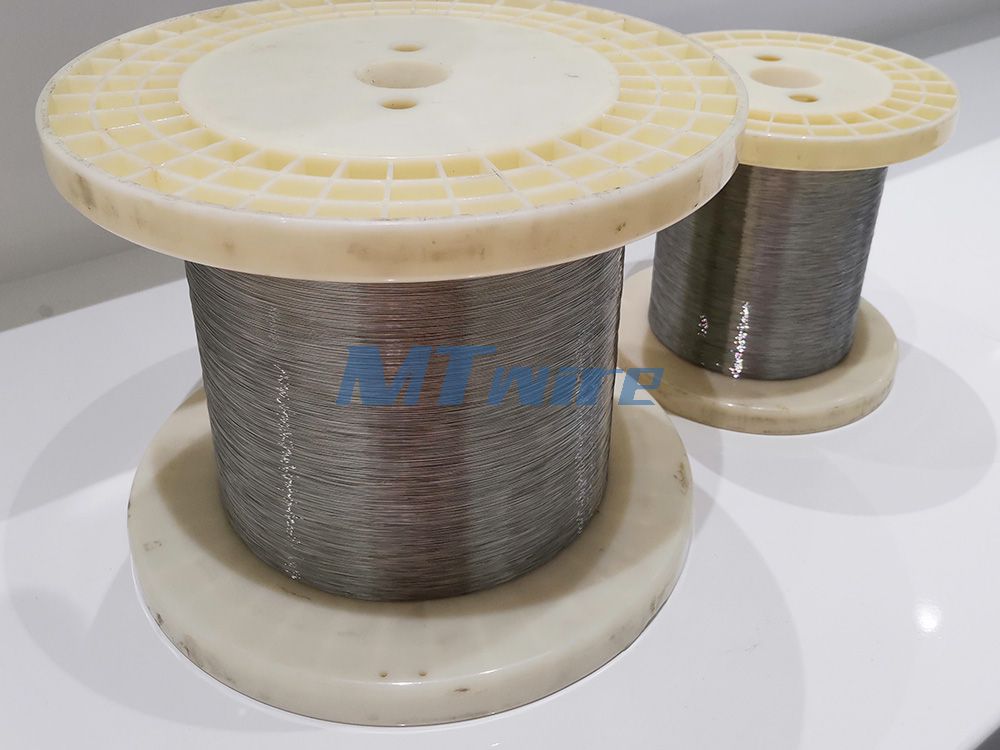nickel alloy bar
MTSCO is a premier nickel alloy bar manufacturer, globally recognized for its exceptional quality and innovative solutions. Backed by MT Holding Group, MTSCO operates a comprehensive factory complex that specializes in the R&D and smelting of superalloy and corrosion-resistant alloy products. These products are meticulously designed to withstand harsh environments characterized by strong acids, high temperatures, and elevated pressures.
At the forefront of its offerings is the Nickel Alloy 625/825 UNS N06625/08825 Round Bar/Rod, renowned for its superior strength at temperatures up to 816℃. This makes it an ideal choice for the oil industry and other demanding applications. MTSCO's product line also includes Nickel Alloy Wire, such as the Nickel Alloy 200/201, which is favored for its resistance to intergranular embrittlement. Additionally, the Nickel Alloy 600/601 Wire is distinguished by its excellent resistance to oxidation at elevated temperatures up to 1200℃, making it suitable for chemical injection lines.
MTSCO’s expansive 33,500-square-meter facility is equipped with state-of-the-art vacuum induction furnaces, cold rolling machines, and advanced bright annealing furnaces. Committed to quality, MTSCO employs a range of inspection equipment to ensure every nickel alloy rod and wire meets stringent standards. Serving over 25 countries, MTSCO continues to enhance global industry development, reaffirming its dedication to delivering unparalleled nickel alloy solutions.
At the forefront of its offerings is the Nickel Alloy 625/825 UNS N06625/08825 Round Bar/Rod, renowned for its superior strength at temperatures up to 816℃. This makes it an ideal choice for the oil industry and other demanding applications. MTSCO's product line also includes Nickel Alloy Wire, such as the Nickel Alloy 200/201, which is favored for its resistance to intergranular embrittlement. Additionally, the Nickel Alloy 600/601 Wire is distinguished by its excellent resistance to oxidation at elevated temperatures up to 1200℃, making it suitable for chemical injection lines.
MTSCO’s expansive 33,500-square-meter facility is equipped with state-of-the-art vacuum induction furnaces, cold rolling machines, and advanced bright annealing furnaces. Committed to quality, MTSCO employs a range of inspection equipment to ensure every nickel alloy rod and wire meets stringent standards. Serving over 25 countries, MTSCO continues to enhance global industry development, reaffirming its dedication to delivering unparalleled nickel alloy solutions.
Nickel Alloy Bar/Wire
The Frequent FAQs of Nickel Alloy Bar/Wire
How durable is nickel alloy?▾
Nickel alloys are renowned for their exceptional durability, making them an indispensable material in a multitude of high-stress and critical applications. The inherent properties of nickel – including outstanding resistance to corrosion, oxidation, and high temperatures – combined with its high ductility and formability, create a class of superalloys that perform reliably even in the harshest environments. Understanding the composition, versatility, and specific advantages of nickel alloys is crucial in appreciating their robustness.
At the heart of all nickel alloys is nickel, a metal known for its excellent resistance to various degrading elements and its ability to retain strength at extreme temperatures. The durability of nickel alloy is further enhanced by combining nickel with other metals, each contributing unique properties to the mix.
For instance, the addition of titanium enhances strength and corrosion resistance, particularly at elevated temperatures. Copper is incorporated for non-magnetic properties and exceptional heat and electricity conduction. Cobalt contributes significantly to corrosion resistance in extremely hot environments, while chromium increases resistance to stress-cracking and corrosion. The inclusion of aluminum enhances overall strength and corrosion resistance, and niobium boosts weldability and mechanical properties. Each combination is meticulously designed to produce a material capable of meeting specific industrial demands.
Nickel alloys are particularly prized for their performance in extreme conditions. These materials maintain impressive strength and resistance to corrosion at temperatures exceeding 1000°C. Unlike other materials that may become brittle or deform under such stress, nickel alloys retain their structural integrity and continue to perform reliably.
A common issue with very strong materials like iron is their tendency to become brittle and fail under thermal or cyclic loading conditions. On the other hand, metals like copper, despite their ductility, may deform easily under heat, leading to potential failure. Nickel alloys strike a balance by combining the strength of iron with the ductility of copper, ensuring that components remain stable and operational over extended periods.
The durability of nickel alloys extends their viability across a wide range of applications. They are indispensable in sectors such as aerospace, automotive, chemical processing, marine, mining, oil and gas, petrochemical, pollution control, waste management, and power generation. Components made from nickel alloys can be expected to have operational lifespans ranging from 25 to 35 years or even longer, depending on the specific conditions.
One practical example of their application is in nickel alloy wire , which benefits from all these advanced properties. Whether used in high-temperature electrical systems, resistance heating elements, or as structural supports in corrosive environments, nickel alloy wire remains robust and reliable. Its ability to maintain performance under thermal and mechanical stress makes it an invaluable material for both industry and technology.
Nickel alloys embody a unique combination of strength, ductility, and resistance to extreme conditions, making them the material of choice for critical applications. Their carefully engineered compositions enhance durability and reliability, ensuring safety and efficiency across various industries. The extended lifespan of nickel alloy components, including nickel alloy wire, underscores their impressive durability and makes them a cornerstone in the development of modern technology and infrastructure.
● Composition and Versatility
At the heart of all nickel alloys is nickel, a metal known for its excellent resistance to various degrading elements and its ability to retain strength at extreme temperatures. The durability of nickel alloy is further enhanced by combining nickel with other metals, each contributing unique properties to the mix.
For instance, the addition of titanium enhances strength and corrosion resistance, particularly at elevated temperatures. Copper is incorporated for non-magnetic properties and exceptional heat and electricity conduction. Cobalt contributes significantly to corrosion resistance in extremely hot environments, while chromium increases resistance to stress-cracking and corrosion. The inclusion of aluminum enhances overall strength and corrosion resistance, and niobium boosts weldability and mechanical properties. Each combination is meticulously designed to produce a material capable of meeting specific industrial demands.
● Superior Performance in Extreme Conditions
Nickel alloys are particularly prized for their performance in extreme conditions. These materials maintain impressive strength and resistance to corrosion at temperatures exceeding 1000°C. Unlike other materials that may become brittle or deform under such stress, nickel alloys retain their structural integrity and continue to perform reliably.
A common issue with very strong materials like iron is their tendency to become brittle and fail under thermal or cyclic loading conditions. On the other hand, metals like copper, despite their ductility, may deform easily under heat, leading to potential failure. Nickel alloys strike a balance by combining the strength of iron with the ductility of copper, ensuring that components remain stable and operational over extended periods.
● Applications and Longevity
The durability of nickel alloys extends their viability across a wide range of applications. They are indispensable in sectors such as aerospace, automotive, chemical processing, marine, mining, oil and gas, petrochemical, pollution control, waste management, and power generation. Components made from nickel alloys can be expected to have operational lifespans ranging from 25 to 35 years or even longer, depending on the specific conditions.
One practical example of their application is in nickel alloy wire , which benefits from all these advanced properties. Whether used in high-temperature electrical systems, resistance heating elements, or as structural supports in corrosive environments, nickel alloy wire remains robust and reliable. Its ability to maintain performance under thermal and mechanical stress makes it an invaluable material for both industry and technology.
● Conclusion
Nickel alloys embody a unique combination of strength, ductility, and resistance to extreme conditions, making them the material of choice for critical applications. Their carefully engineered compositions enhance durability and reliability, ensuring safety and efficiency across various industries. The extended lifespan of nickel alloy components, including nickel alloy wire, underscores their impressive durability and makes them a cornerstone in the development of modern technology and infrastructure.
Is nickel alloy good?▾
Nickel alloys are exceptional materials that have earned their place in various high-stress applications across several industries. These versatile superalloys are chosen for their ability to function optimally even in the most challenging environments. When discussing whether nickel alloys are good, it's important to consider the unique properties and benefits they bring to the table.
One of the most compelling reasons why nickel alloys are highly regarded is their remarkable resistance to corrosion and oxidation. This makes them ideal for applications that involve exposure to harsh chemicals and extreme temperatures. Nickel's inherent durability ensures that components made from these alloys can withstand rigorous conditions, thus extending their operative life.
Nickel alloys offer a harmonious blend of strength and ductility, properties that are rarely found together in most materials. Traditional strong materials like iron often become brittle when subjected to high temperatures, leading to potential component failure. Conversely, ductile metals like copper, while easy to work with, tend to deform under heat. Nickel alloys strike a balance by maintaining high strength without sacrificing ductility, ensuring components remain both robust and workable.
In the aerospace and automotive sectors, the demands for materials that can resist high-temperature and cyclic loading pressures are relentless. Nickel alloys meet these demands effortlessly, making them indispensable in these fields. Their ability to retain structural integrity under prolonged high-stress conditions significantly reduces the risk of component failure, enhancing overall safety and reliability.
The chemical processing industry often deals with highly corrosive media that can degrade lesser materials swiftly. Nickel alloys' superior resistance to such environments makes them the preferred choice for constructing pipes, tubes, and fittings. Similarly, in power generation, where components operate at extremely high temperatures, the stability of nickel alloys ensures efficient and safe performance.
Nickel alloys can be customized by combining nickel with various metals, each imparting its unique properties to the alloy. For instance, adding titanium increases the alloy's strength and corrosion resistance at high temperatures. Copper enhances machinability and electrical conductivity, while cobalt offers excellent corrosion resistance even under extreme heat.
Chromium improves resistance to stress-cracking, making the alloy more reliable under cyclic loading. Aluminium adds strength and further enhances corrosion resistance, while niobium boosts weldability and mechanical properties. This adaptability ensures that nickel alloys can be tailored to meet specific requirements, making them incredibly versatile.
Nickel alloy components are known for their longevity, often lasting 25-35 years or more, depending on the conditions. This long service life not only provides economic benefits but also ensures minimal downtime and maintenance, which is crucial in critical applications. Their stability under high temperatures and resistance to embrittlement make them a safer option, reducing the likelihood of sudden and dangerous failures.
In conclusion, nickel alloys are indeed good, if not excellent, materials for a wide range of applications. Their unique combination of strength, ductility, and resistance properties makes them a standout choice for industries requiring reliable and durable components. When considering materials for high-stress and high-temperature environments, nickel alloys are undeniably an optimal choice. For those looking to source high-quality nickel alloy bars, it is advisable to contact a reputable nickel alloy bar manufacturer to ensure the best specifications and performance for your needs.
● Unique Properties of Nickel Alloys
● ○ Exceptional Resistance
○ Exceptional Resistance
One of the most compelling reasons why nickel alloys are highly regarded is their remarkable resistance to corrosion and oxidation. This makes them ideal for applications that involve exposure to harsh chemicals and extreme temperatures. Nickel's inherent durability ensures that components made from these alloys can withstand rigorous conditions, thus extending their operative life.
● ○ High Strength and Ductility
○ High Strength and Ductility
Nickel alloys offer a harmonious blend of strength and ductility, properties that are rarely found together in most materials. Traditional strong materials like iron often become brittle when subjected to high temperatures, leading to potential component failure. Conversely, ductile metals like copper, while easy to work with, tend to deform under heat. Nickel alloys strike a balance by maintaining high strength without sacrificing ductility, ensuring components remain both robust and workable.
● Versatility in Applications
● ○ Aerospace and Automotive Industries
○ Aerospace and Automotive Industries
In the aerospace and automotive sectors, the demands for materials that can resist high-temperature and cyclic loading pressures are relentless. Nickel alloys meet these demands effortlessly, making them indispensable in these fields. Their ability to retain structural integrity under prolonged high-stress conditions significantly reduces the risk of component failure, enhancing overall safety and reliability.
● ○ Chemical Processing and Power Generation
○ Chemical Processing and Power Generation
The chemical processing industry often deals with highly corrosive media that can degrade lesser materials swiftly. Nickel alloys' superior resistance to such environments makes them the preferred choice for constructing pipes, tubes, and fittings. Similarly, in power generation, where components operate at extremely high temperatures, the stability of nickel alloys ensures efficient and safe performance.
● Alloying Elements and Enhanced Properties
● ○ Titanium, Copper, and Cobalt
○ Titanium, Copper, and Cobalt
Nickel alloys can be customized by combining nickel with various metals, each imparting its unique properties to the alloy. For instance, adding titanium increases the alloy's strength and corrosion resistance at high temperatures. Copper enhances machinability and electrical conductivity, while cobalt offers excellent corrosion resistance even under extreme heat.
● ○ Chromium, Aluminium, and Niobium
○ Chromium, Aluminium, and Niobium
Chromium improves resistance to stress-cracking, making the alloy more reliable under cyclic loading. Aluminium adds strength and further enhances corrosion resistance, while niobium boosts weldability and mechanical properties. This adaptability ensures that nickel alloys can be tailored to meet specific requirements, making them incredibly versatile.
● Longevity and Safety
Nickel alloy components are known for their longevity, often lasting 25-35 years or more, depending on the conditions. This long service life not only provides economic benefits but also ensures minimal downtime and maintenance, which is crucial in critical applications. Their stability under high temperatures and resistance to embrittlement make them a safer option, reducing the likelihood of sudden and dangerous failures.
In conclusion, nickel alloys are indeed good, if not excellent, materials for a wide range of applications. Their unique combination of strength, ductility, and resistance properties makes them a standout choice for industries requiring reliable and durable components. When considering materials for high-stress and high-temperature environments, nickel alloys are undeniably an optimal choice. For those looking to source high-quality nickel alloy bars, it is advisable to contact a reputable nickel alloy bar manufacturer to ensure the best specifications and performance for your needs.
Is nickel alloy strong?▾
Nickel alloys are widely recognized for their unparalleled strength, making them a prime choice for critical, high-stress applications across various industries. The inherent properties of these superalloys allow them to withstand the most extreme conditions, whether that be high temperatures, corrosive environments, or repeated cyclic loading. This combination of strength, ductility, and resistance makes nickel alloys a trustworthy material in demanding sectors such as aerospace, marine, and chemical processing.
High Strength and Durability
At the heart of what makes nickel alloys incredibly strong is their ability to maintain structural integrity under conditions where other materials would fail. For instance, traditional materials like iron exhibit high strength but become brittle when subjected to stress, especially at elevated temperatures. Nickel alloys, however, retain their robustness even above 1000°C, making them ideal for high-temperature applications. This is particularly important in environments such as jet engines or power plants where consistent performance under thermal stress is crucial.
Corrosion Resistance
Another standout feature of nickel alloys is their exceptional resistance to corrosion. Various elements can be introduced into the nickel matrix to enhance specific properties. For example, adding chromium significantly improves corrosion resistance and stress-cracking resilience, which is critical for components exposed to harsh chemicals and salty marine environments. This resistance to corrosion extends the lifespan of nickel alloy components, reducing the need for frequent replacements and maintenance.
Ductility and Workability
The ductility and formability of nickel alloys set them apart from other high-strength materials. While metals like iron are strong but brittle, and materials like copper are ductile but deform easily under stress, nickel alloys strike a balance. This balance ensures that nickel alloy wire and components can be easily formed into complex shapes without compromising their mechanical properties. This workability makes nickel alloys particularly valuable in applications requiring intricate designs and high precision.
Aerospace
In the aerospace sector, nickel alloys are indispensable. The intense heat and stress experienced by aircraft engines necessitate materials that can maintain their mechanical properties without succumbing to deformation or failure. Nickel alloys meet these demands, providing both strength and thermal stability.
Marine and Chemical Processing
In marine environments, materials face continuous exposure to corrosive seawater. Nickel alloys, especially those with added elements like titanium and copper, offer enhanced corrosion resistance, making them ideal for shipbuilding and offshore structures. Similarly, in chemical processing plants, where components are exposed to aggressive chemicals, the superior corrosion resistance of nickel alloys ensures long-lasting performance.
Electrical Resistance and Thermal Processing
Nickel alloy wire is commonly used in applications requiring high electrical resistance and heat dissipation. The stability of these alloys at high temperatures makes them suitable for electrical heating elements and resistance wires, ensuring consistent performance and durability.
In conclusion, the strength of nickel alloys is not merely a singular attribute but a composite of properties that include high temperature resistance, exceptional corrosion resistance, and remarkable ductility. These characteristics make nickel alloys a versatile and reliable material for a multitude of high-stress applications. Whether used in the form of nickel alloy wire or complex components, these superalloys showcase an impressive blend of properties that promise longevity and dependability, fulfilling the stringent requirements of modern industrial applications.
● Properties of Nickel Alloys
High Strength and Durability
At the heart of what makes nickel alloys incredibly strong is their ability to maintain structural integrity under conditions where other materials would fail. For instance, traditional materials like iron exhibit high strength but become brittle when subjected to stress, especially at elevated temperatures. Nickel alloys, however, retain their robustness even above 1000°C, making them ideal for high-temperature applications. This is particularly important in environments such as jet engines or power plants where consistent performance under thermal stress is crucial.
Corrosion Resistance
Another standout feature of nickel alloys is their exceptional resistance to corrosion. Various elements can be introduced into the nickel matrix to enhance specific properties. For example, adding chromium significantly improves corrosion resistance and stress-cracking resilience, which is critical for components exposed to harsh chemicals and salty marine environments. This resistance to corrosion extends the lifespan of nickel alloy components, reducing the need for frequent replacements and maintenance.
Ductility and Workability
The ductility and formability of nickel alloys set them apart from other high-strength materials. While metals like iron are strong but brittle, and materials like copper are ductile but deform easily under stress, nickel alloys strike a balance. This balance ensures that nickel alloy wire and components can be easily formed into complex shapes without compromising their mechanical properties. This workability makes nickel alloys particularly valuable in applications requiring intricate designs and high precision.
● Applications of Nickel Alloys
Aerospace
In the aerospace sector, nickel alloys are indispensable. The intense heat and stress experienced by aircraft engines necessitate materials that can maintain their mechanical properties without succumbing to deformation or failure. Nickel alloys meet these demands, providing both strength and thermal stability.
Marine and Chemical Processing
In marine environments, materials face continuous exposure to corrosive seawater. Nickel alloys, especially those with added elements like titanium and copper, offer enhanced corrosion resistance, making them ideal for shipbuilding and offshore structures. Similarly, in chemical processing plants, where components are exposed to aggressive chemicals, the superior corrosion resistance of nickel alloys ensures long-lasting performance.
Electrical Resistance and Thermal Processing
Nickel alloy wire is commonly used in applications requiring high electrical resistance and heat dissipation. The stability of these alloys at high temperatures makes them suitable for electrical heating elements and resistance wires, ensuring consistent performance and durability.
In conclusion, the strength of nickel alloys is not merely a singular attribute but a composite of properties that include high temperature resistance, exceptional corrosion resistance, and remarkable ductility. These characteristics make nickel alloys a versatile and reliable material for a multitude of high-stress applications. Whether used in the form of nickel alloy wire or complex components, these superalloys showcase an impressive blend of properties that promise longevity and dependability, fulfilling the stringent requirements of modern industrial applications.
Does nickel alloy rust?▾
Nickel alloy, widely recognized for its corrosion-resistant properties, is a staple in various industries. However, recent research has brought to light some intriguing nuances regarding its susceptibility to corrosion. Contrary to longstanding assumptions, specific conditions can indeed lead to the corrosion of nickel alloy, challenging the material's esteemed reputation for durability and longevity.
Nickel is one of the earth's most abundant elements, prized for its hardness, malleability, and excellent conductive properties. Historically, nickel alloy has been favored in applications where corrosion resistance is paramount, such as in marine environments, chemical plants, and the production of nickel alloy rods used in high-stress structural components. The general consensus among engineers and metallurgists has been that nickel alloy offers superior protection against rust and other forms of corrosion, thanks to its unique chemical structure.
Recent studies have revealed a surprising vulnerability in nickel alloy, specifically within its coherent twin boundaries. These boundaries—areas where the internal crystal structure of the material mirrors itself along a shared border—were previously thought to be robust against corrosion. However, researchers found that when subjected to cathodic charging, a process typically associated with reducing corrosion potential, nickel alloy exhibited significant intergranular corrosion precisely at these coherent twin boundaries.
This discovery has profound implications for industries that rely on nickel alloy for its presumed corrosion resistance. The revelation that coherent twin boundaries are susceptible to corrosion flips decades of metallurgical assumptions on their head. Consequently, engineers might need to reassess the use of nickel alloys in critical applications and explore new strategies for enhancing the material's durability.
To delve deeper, it's essential to understand the specific mechanisms at play. Intergranular corrosion, the localized attack at the grain boundaries, weakens the material from the inside out. In nickel alloys, coherent twin boundaries were previously considered impermeable to such degradation. However, the latest research indicates that these boundaries, under certain conditions, can be preferential sites for corrosion initiation. This vulnerability is exacerbated under cathodic conditions, which are generally less likely to induce corrosion.
The newfound understanding of corrosion mechanisms in nickel alloy necessitates a reevaluation of existing materials and processes. Engineers and researchers are now tasked with developing nickel alloys that mitigate this newfound vulnerability. Enhancing the alloy's composition or altering its microstructural properties may offer pathways to improved corrosion resistance. Additionally, the production of nickel alloy rods and other components will need to incorporate these insights to ensure long-term reliability.
In conclusion, while nickel alloy has long been hailed for its corrosion-resistant properties, recent discoveries necessitate a nuanced understanding of its limitations. The susceptibility of coherent twin boundaries to intergranular corrosion, particularly under cathodic charging, underscores the need for ongoing research and innovation in material science. For industries that depend on the strength and durability of nickel alloy rods and other components, these findings are a critical reminder of the importance of continuously updating knowledge and practices to maintain the integrity and performance of their structures and products.
● Understanding Nickel Alloy and Corrosion
Nickel is one of the earth's most abundant elements, prized for its hardness, malleability, and excellent conductive properties. Historically, nickel alloy has been favored in applications where corrosion resistance is paramount, such as in marine environments, chemical plants, and the production of nickel alloy rods used in high-stress structural components. The general consensus among engineers and metallurgists has been that nickel alloy offers superior protection against rust and other forms of corrosion, thanks to its unique chemical structure.
● The Surprising Discovery
Recent studies have revealed a surprising vulnerability in nickel alloy, specifically within its coherent twin boundaries. These boundaries—areas where the internal crystal structure of the material mirrors itself along a shared border—were previously thought to be robust against corrosion. However, researchers found that when subjected to cathodic charging, a process typically associated with reducing corrosion potential, nickel alloy exhibited significant intergranular corrosion precisely at these coherent twin boundaries.
● Implications for Industry
This discovery has profound implications for industries that rely on nickel alloy for its presumed corrosion resistance. The revelation that coherent twin boundaries are susceptible to corrosion flips decades of metallurgical assumptions on their head. Consequently, engineers might need to reassess the use of nickel alloys in critical applications and explore new strategies for enhancing the material's durability.
● Mechanisms of Corrosion in Nickel Alloy
To delve deeper, it's essential to understand the specific mechanisms at play. Intergranular corrosion, the localized attack at the grain boundaries, weakens the material from the inside out. In nickel alloys, coherent twin boundaries were previously considered impermeable to such degradation. However, the latest research indicates that these boundaries, under certain conditions, can be preferential sites for corrosion initiation. This vulnerability is exacerbated under cathodic conditions, which are generally less likely to induce corrosion.
● Future Directions
The newfound understanding of corrosion mechanisms in nickel alloy necessitates a reevaluation of existing materials and processes. Engineers and researchers are now tasked with developing nickel alloys that mitigate this newfound vulnerability. Enhancing the alloy's composition or altering its microstructural properties may offer pathways to improved corrosion resistance. Additionally, the production of nickel alloy rods and other components will need to incorporate these insights to ensure long-term reliability.
● Conclusion
In conclusion, while nickel alloy has long been hailed for its corrosion-resistant properties, recent discoveries necessitate a nuanced understanding of its limitations. The susceptibility of coherent twin boundaries to intergranular corrosion, particularly under cathodic charging, underscores the need for ongoing research and innovation in material science. For industries that depend on the strength and durability of nickel alloy rods and other components, these findings are a critical reminder of the importance of continuously updating knowledge and practices to maintain the integrity and performance of their structures and products.


